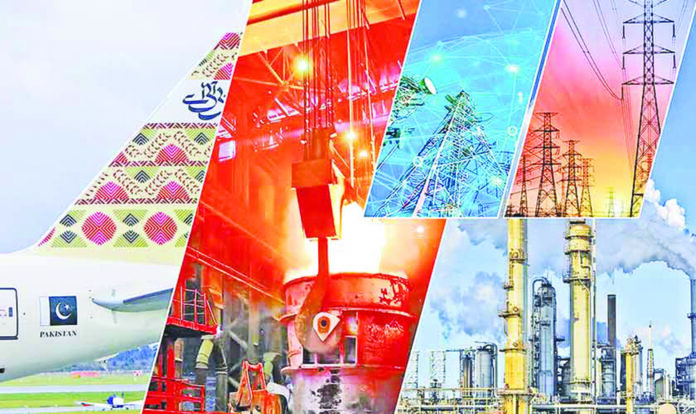Federal Footprint State-Owned Enterprises (SOEs) Consolidated Report FY2020-22, indicates Rs730.26bn cumulative loss of 31 entities versus cumulative loss of Rs. 665bn by 25 in 2021. Thus profitable enterprises have dropped from 56 in FY21 to 50 in FY22.
SOE reforms and restructuring has started with State-owned Enterprises (Ownership and Management) Policy 2023 which aims to enhance the governance and operations of state-owned enterprises in Pakistan by ensuring transparency, professionalism, and effective management, while also addressing concerns of political influence and inefficiencies in these entities by categorizing the SOEs by April 2024.
When will the Board Nomination Committee in the relevant Ministry/Division be activated and when will BNC ensure compliance to the guidelines in the policy by making a proposal for SOE Boards? The matter of enforcement of provisions of the SOE Act has been raised in the IHC and the Secretary Finance is to decide per law by next week.
And we continue to dream of stemming the rot in our DISCOs by privatizing them, propagating changing their BsOD and promoting narrative of empowering CEO/management further.
In an attempt to improve operations, the establishment of Performance Management Units is being considered in five high loss-making power Distribution Companies- a home grown solution to improve rather than privatize.
And privatization despite the reality check of recent disinvestment of HEC, being first the privatization after 2015 in the fifth attempt after 14 years, upon cabinet approval in December 2020 was bid in February 2022 and the process was completed in January 2024 after 2 years instead of 60 days, which is not helpful in bringing confidence of any timely progress for others on the block.
Change through wealth fund and a revived PIDC is a disruptive approach, and is essential given our history of privatization and our unsuccessful efforts at reorganizing. Retaining SOEs and by implementing strategic reforms, enhancing transparency, merger and fostering innovation, we can harness the potential of the state-owned enterprises by turning them around to ensure they contribute significantly to national development
This homegrown solution requires continued long term effort and commitment with clear understanding that there is no shortcut deliverance of results and that they do not occur immediately, despite all the hoopla.
We also have a Pakistan Development Fund of $1.5billion set up in 2014 being activated now. Why is it being revived when Pakistan established a sovereign wealth fund last year, capitalising it with $8 billion in shares in state-owned enterprises, and not being merged with it?
As a nation we are not demanding resolution or improvement to bring about efficiency to our governance system. Therefore the only manifesto required for the next 5 years is to ensure a GDP growth of 7 percent with empowered local bodies: Otherwise viva hope.
Further more, shareholder activism has commenced to protect minority shareholders with successes resulting in management changes and improvement in the bottom line. This is a good step and will play a significant role in ensuring performance of listed companies.
Suggestion of our experts on managing circular debt is of nationalizing IPPs or putting them on the block while Category lll projects are still being pursued since 2018/19 by Pakistan Foreign Renewable Energy Forum, requesting an upfront tariff, instead of participating in bidding for the 600 MWp project that is being repeatedly extended or in solarization of Public Sector Buildings on Own Cost Model.
This is contradictory and there has been repeated talk of issues with the Power Policy of the past, the need for competitive bidding, the circular debt buildup due to non utilization in winter, take or pay provisions, GOP guarantees and ROE linkages to the dollar.
Why?
The Citizens’ Commission for Equality and Human Rights Report 2023 and similar other publications over the years relating to oppressed downtrodden and discriminated segments of our workforce have fallen on deaf ears. The, Employer’s Federation of Pakistan and Minimum Wage Board opposed increasing minimum wage in 2020, which is reflective of our priorities and intent whereby alternate studies highlight that a living wage would be Rs 51,700 a month today.
Unilever has stated to have shifted 60 percent of its outer core, which includes an indirect workforce of over 12,000 people in its business value chain, to an average wage of Rs 52,000 with the goal to transition the remaining by 2025 and Jazz has provided a one-time inflation adjustment payout of up to Rs 50,000 for its frontline and contractual employees falling within a certain salary bracket and has set the minimum wage for its permanent employees to Rs 62,000.
Why is APTMA, Provincial Governments, PSMA , FPCCI and other trade and industry associations not clamouring to facilitate a living wage for employees on priority while seeking subsidy, protection and exemptions?
The narrative has shifted from Bangladesh as an example to power tariffs for industrial consumers containing a cross-subsidy ranging from Rs 10.85/kWh, to Rs 16/kWh with the carrot of exports of $2 billion per month by a dedicating RLNG-fired power plant and lower wheeling so that cheap electricity is provided to industry, but no solutions seem to be forthcoming on the issue of misuse of cheap electricity and gas by some APTMA units which are also involved in selling their products in local market nor are on captive plants to operate on RLNG pricing or lowering priority order of zero-rated industry when getting approval for revised priority order since 2018.
A new report by the IMF has said the PSDP has become “unaffordable” with currently approved projects likely to take a decade and a half to complete before accounting for cost increases, as total cost to complete the already approved projects in the PSDP is Rs 12 trillion, against a budget allocation of Rs 727 billion for the outgoing fiscal year. Our project’s lifeline is unsustainable and needs judicious optimization in line with strategic priorities.
Are we thus willing to improve our perspective plan (Visions, IGCEP, National Electricity Plan and Policy, Transmission Line Policy, Unaccounted for Gas Study…), five-year plans, process of adjustments to both and Annual Development Programme to include accountability and performance measurement under focus by a “Pakistan NDRC”?
The expects “modest economic growth” of 2 percent in Pakistan in 2024, which is expected to improve to 2.4 percent in 2025 whereas growth in South Asia is projected to remain robust at 5.2 percent in 2024. WOW!
But the projections in World Economic Situation and Prospects (WESP) 2024 does not cause any debate or ripples in the country. Furthermore “the effects of higher interest rates will continue to weigh on investment, and weaker global demand will lead to slower export growth,” should be cause for proactive policy actions.
Thus, it is not that we do not know of solutions or have not undertake policy measures but why we let hope continue to manage us by presenting old wine in new bottles with no monitoring, is mind boggling.
It is probably because as a nation we are not demanding resolution or improvement to bring about efficiency to our governance system. Therefore the only manifesto required for the next 5 years is to ensure a GDP growth of 7 percent with empowered local bodies: Otherwise viva hope.























